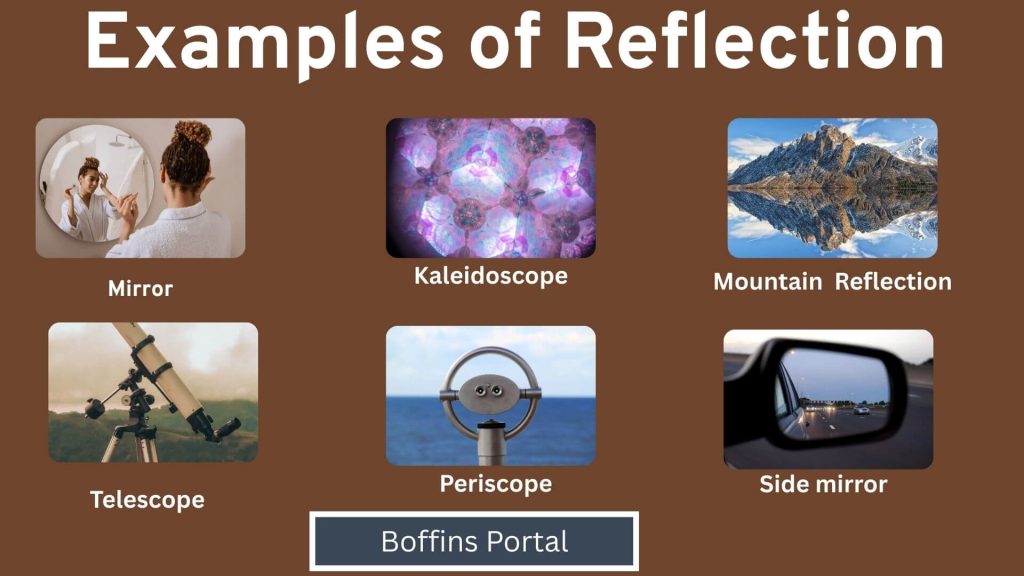In mathematics, shapes can be transformed in different ways to create new positions or orientations on a plane. These transformations include reflection, translation, dilation, and rotation, each describing a unique kind of movement or change.
Today, we focus on reflection and how it appears in everyday life.
A reflection is a transformation that flips a figure across a fixed line, called the line of reflection, to create a mirror image. The original figure is known as the pre-image, while the flipped version is the image.
Reflection is a rigid (or isometric) transformation, which means the size and shape of the figure remain unchanged—the image and pre-image are congruent. What changes is the orientation of the figure.
Think of it as a perfect “flip” across a line. Every point on the image lies the same distance from the line of reflection as its matching point on the pre-image. The line of reflection can be vertical, horizontal, or even slanted at an angle.
From the symmetry of a butterfly’s wings to the glassy surface of a calm lake, reflections are everywhere. Let’s explore some fascinating real-life examples of this mathematical concept.

Examples of Reflection in Real Life
1. Images in a Plane Mirror
Mirrors do not allow light to pass through. Instead, all the light rays that hit a mirror are reflected.
A mirror is made by putting a shiny silver nitrate or aluminum backing behind a flat piece of glass.
If you place an object in front of a mirror, you will see the image of the object in the mirror. The object and the image are the same size and are equidistant from the mirror.
Light rays known as incident rays emanate from the object and strike the mirror. The light rays are reflected from the mirror’s surface to the observer’s eyes.
2. Kaleidoscope
A kaleidoscope is an optical tube that contains colored materials and inclined mirrors whose reflections produce a variety of patterns when the tube is rotated.
It consists of a tube that surrounds an assembly of two or more mirrors.
The mirrors are placed at angles to each other to form V-shapes. At one end of the mirrors, there’s a collection of shiny objects. At the other end of the tube, there is an eyehole.
When light enters the kaleidoscope, it reflects back and forth between the mirrors within the tube.
The light also bounces off the shiny objects to form mirror images of the objects. The repeated reflections form beautiful patterns of light and color.
3. Mountain Range Reflected In A Calm And Clear Lake
One of the most beautiful sights in nature is the picture of a snowy mountain reflected in a still lake.
The surface of the water acts as a line of reflection. The mountain and its image appear to be of the same size.
4. Reflecting Telescopes
Reflecting telescopes are used in astronomy to view images of objects with very large diameters. They were invented by Isaac Newton in 1668 and are the main telescopes used in astronomy.
A reflecting telescope uses a combination of curved mirrors to collect and focus light toward an eyepiece.
The curved mirrors, which are lighter and easier to shape compared to lenses, reflect light to form images.
The mirrors in a telescope are known as optics. Bigger mirrors will gather more light.
The shape of the optics helps to concentrate the light. The light can be directed to a sensor that records the image formed.
5. Periscope
Periscopes are optical instruments used by submarines to check for objects around, over, or through an obstacle. They are also used to search for danger on the water surface.
A simple periscope is made of two plane mirrors that are parallel to each other and are set at 45-degree angles at the corners of a tube.
Light is reflected off an object to form an image on each mirror.
6. Side View Mirror in Cars
Side view mirrors use the principles of reflection to help drivers view the areas on the sides of a car and blind spots.
In many vehicles in the USA, mirrors on the passenger side are convex in shape while side mirrors on the driver’s side are flat.
In other parts of the world, regulation standards allow both side-view mirrors to have convex surfaces.
Because of the reflections of the two mirrors, drivers can view wider areas.
7. Shiny Metal Surfaces
Polished metal objects such as spoons, stainless steel appliances, or chrome fixtures reflect light just like mirrors.
When light strikes the smooth, shiny surface, it bounces back, creating visible reflections of nearby objects.
The smoother the metal, the clearer the reflected image.
8. Binoculars and Cameras
Many binoculars and digital cameras contain small internal mirrors or prisms that reflect light to the our eyes or the camera sensor.
These mirrors redirect light through the lenses, allowing the device to capture or display a sharp image.
Without reflection, these optical instruments would not work as effectively.
9. Calm Puddles After Rain
Remember those carefree childhood days of jumping over puddles after a rainfall? Back then, we often noticed how these little pools of water acted like natural mirrors—a tiny bit of magic on the ground. Nostalgia aside, the effect is still just as real today.
When the surface of a puddle is perfectly still, it reflects trees, buildings, clouds, and even your own face when you lean in to peek.
This beautiful mirror-like image happens because light rays bounce smoothly off the calm, flat surface of the water.
10. Flashlights and Headlights
Inside a flashlight or car headlight, a shiny curved reflector surrounds the bulb.
This reflector bounces the light forward in a focused beam, making it brighter and more efficient.
The reflective surface ensures that light is directed where it’s needed instead of scattering in all directions.
